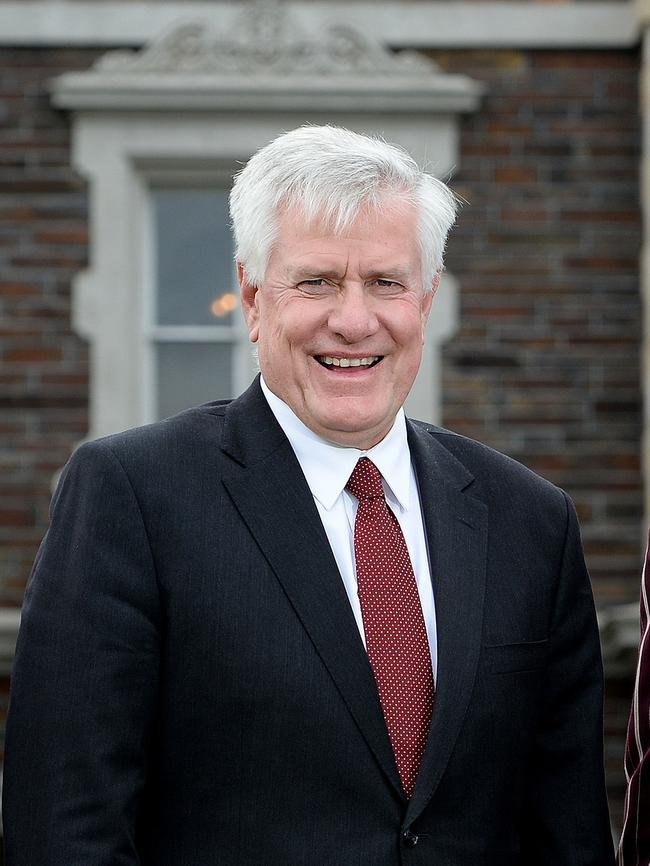SACE Board researching how to help boys as girls do twice as well in Year 12 results
Girls are doing twice as well as boys at the top end of Year 12 results, with the SACE board now trialling new ways for boys to be tested.
SA News
Don't miss out on the headlines from SA News. Followed categories will be added to My News.
Fixing the growing gender gap for school leavers, where females outperform males in almost all results, will lead to changes giving boys a better chance to prove they know their stuff.
A trial where students can make a video or give a live presentation to a panel rather than having to hand up a long written report for their compulsory research project is being planned by the SACE Board.
Further changes to increase flexibility in assessment are expected in more subjects but the board, which runs the Year 12 SA Certificate of Education, is wary of any restrictive changes disadvantaging females.
There was no quick fix to what is a global issue, SACE Board chief executive Martin Westwell said.
However, Prince Alfred College headmaster Bradley Fenner, who has now taken a campaign on the issue to Education Minister John Gardner, says reforms are moving too slowly.
“The situation has reached a crisis point for the majority of boys in this state,” Mr Fenner has told the minister.

Males lag far behind in university applications with a five-point gap in the Australian Tertiary Admission Rank and are at an almost two-to-one disadvantage in getting a top score in Year 12 subjects.
The ATAR gap has widened for the past three years in a row, adding to Mr Fenner’s frustration after pushing for reform for more than four years without much effect.
“I am extremely concerned about the lack of urgency and resolve that I have encountered amongst all parties in addressing this serious gender equity issue,” he said of his approaches to the SACE Board, Equal Opportunity Commissioner and other authorities.
Prince Alfred College is one of five all-boys secondary schools in SA, but Mr Fenner said his concerns should not be confused with debate on coeducation versus single-sex schooling.
The data showed the problem affected boys at all SA schools.
Educators say boys are “game-day players”, performing well under intense pressure such as an exam, but girls “master” what they learn rather than excelling in an individual task.
Professor Westwell said getting the balance right between boys and girls was not simple.
“We see differences in writing, for example, all the way through their schooling,” he said.
NAPLAN results show the gap grows. There was little difference at Year 3, but by Year 9 girls were three months ahead of boys in reading and six months ahead on writing.
The SACE board was looking at individual subjects to see where writing might “get in the way” of a fair assessment.
Examiners wanted a broad range of ways to judge whether students had achieved against required standards.
“That’s not always a writing piece,” Prof Westwell said. “A real feature of the SACE is the flexibility in assessment.”
This could include schools getting students to write essays under exam conditions.
“But what I don’t like is making all students do that because for many students that might not be the best way for them to show what they know – especially if the argument is that girls won’t do so well,” Prof Westwell said.
School-assessed results make up 70 per cent of Year 12 (Stage 2) subjects with the SACE Board externally assessing 30 per cent.
To obtain SACE, students must complete a research project A or B. Only the B stream, which requires a 1500-word written report, counts toward an ATAR uni score.
In the most recent SACE data (2019), there were 2989 females who scored in the A band for their research project B compared with 1435 males.
Prof Westwell said a trial at select schools would be held next year on alternative assessments for the research project.
Beyond that, the board was talking to education academics about the direction of research it would commission on fixing the complex problem.
Solutions would be needed in four areas:
THE underlying cognitive differences between females and males;
SCHOOL and classroom culture because research has found if boys see a hurdle ahead where they expect to fail “they just don’t try”;
CURRICULUM and assessment, particularly the issue of writing; and
TEACHING practices.
“We need expert opinion on the way forward,” he said.
Mr Gardner backed the SACE Board, as a statutory authority, to do “a great job on behalf of the people of SA in ensuring that our children and young people have access to a world-class senior secondary certificate that is developed right here for our needs”.
“It is a flexible certificate that supports achievement by academically gifted university aspirants and young people focused on vocational pathways alike,” he said.
“All SA students, whatever their gender, are fortunate to have a range of pathways available to them to achieve success in life and every day I see our schools right around our state doing a great job in supporting their students.”
Opposition education spokesman Blair Boyer welcomed the SACE Board commissioning research on the problem.
However, he said Mr Gardner “appears distracted” by the issues of Year 7 moving to high school and budget pressures, so was not ensuring timely progress on reforms.
More Coverage
Originally published as SACE Board researching how to help boys as girls do twice as well in Year 12 results




